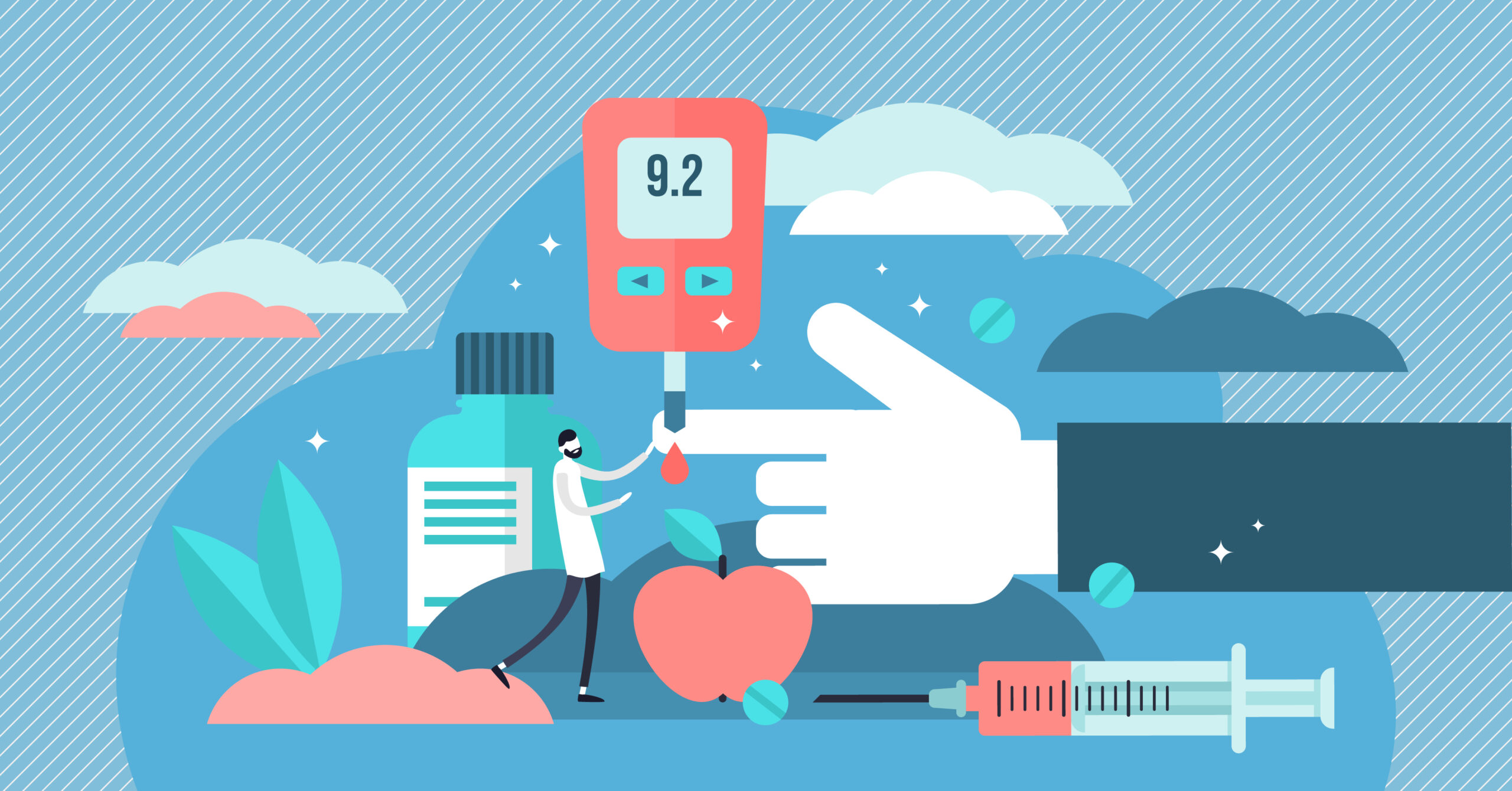Diabetes Mellitus is one of the top leading conditions that is causing a world-wide pandemic. It ranks the 10th most common cause of death in Hong Kong. Diabetes occurs when your bloodstream has an increased level of sugar, called glucose. Normally our blood sugar rises after we eat something. This soon gets utilised by our muscles and cells through a key hormone called insulin. However, if there is an inadequate amount of insulin hormone being produced or the cells in our body does not respond to the insulin available, this results in an excess amount of sugar pooling around our bloodstream.
The build-up of sugar in our blood vessels and nerves causes irritation and inflammation and will start to affect various organs it supplies. The first blood vessels and nerve affected are usually the smallest one supplying the eyes, kidneys and feet. Later, it may also cause complications to your heart if left untreated.
There are 2 main types of diabetes:
- Type 1– is a lifelong condition where your body is unable to produce the insulin hormone. This condition is genetic and usually diagnosed in your early childhood.
- Type 2– happens when your body either is unable to produce enough insulin or not sensitive enough to respond to the insulin hormone. This is the more common type of diabetes we are seeing at a rising trend due to our lifestyle choices.
Gestational Diabetes– occurs when there is an elevated level of blood sugar during pregnancy. These women and children are at increased risk of developing Type 2 diabetes in the future.
Non-diabetic hyperglycemia– this is the amber zone where the blood sugar is above a normal healthy range but not high enough to be within the diabetic range. This group of people are at high risk of developing Type 2 diabetes if left ignored.
Symptoms
People with diabetes are often asymptomatic, until the condition starts to cause complications to blood vessels supplying various organs. It is therefore very important to monitor your blood sugar at least annually. The blood test used to check your blood sugar is called HbA1C. This checks the average blood sugar level you have had in the past 3 months and will not be affected by you skipping breakfast before you blood test.
There are certain groups of people who’s HbA1C may give a false reading including pregnant women, people with haemoglobinopathies such as Thalassemia or sickle cell disease.
Symptoms that may prompt you to check your HbA1C level include:
- Feeling thirsty all the time
- Dry mouth
- The need to pass urine frequently
- Recurrent thrush
- Blurred vision
- Weight loss
These symptoms are more likely to develop in people with Type 1 diabetes.
Type 2 diabetes is more related to excess weight gain and lack of physical activity and usually asymptomatic unless one develops complications. Although people commonly describe diabetes as a chronic condition, Type 2 diabetes is very “curable” when detected early and treated with the correct medication.
Treatment
There are a range of medication available to help you reduce your blood sugar. People get worried about diabetes as they commonly fear the use of insulin injections. The reality is apart from Type 1 diabetics, most patients with Type 2 diabetes will respond very well with the use of oral tablets. Only when oral tablets are not effective enough to bring down your blood sugar readings, are injections considered,but these does not need to be administered daily.
Over the past few years, a newly developed drug called GLP1 agonists (Ozempix, Saxenda, Trulicity, Victoza) has shown increasing efficacy in bringing down blood sugars as well as helping with weight loss. This has revolutionised the entire diabetic platform.
Living with Diabetes
Start with healthy changes to your diet
- Eat small regular meals
- Choose high fibre, a high GI index foods that gets burnt down slowly. Avoid starchy carbohydrates such as potatoes, rice, pasta and white bread. Switch to wholemeal brown bread, wholemeal pasta, legumes or couscous
- Eat more fresh vegetables and fruits – but be cautious to what types of fruits you eat. Certain exotic fruits can have a high sugar content such as a very ripe bananas and mangoes. Berries, apples and citric fruits are generally good.
- Eat less fat- eat less fried food and try to cook with mono-saturated oils such as olive oil or rapseed oil.
- Reduce sugary, salty and processed food.
- Reduce alcohol- the average recommended alcohol intake is about 14 units spread over 3 or more days. (1 glass of 175ml red wine is about 2 units)
Exercise – do at least 150min of moderate exercise per week or 75min of vigorous exercise.
Annual eye checks– the smallest vessels in our body supply our eyes therefore the first organ to be affected by persistently high blood sugar levels are usually our eyes. This is not the regular eye check with your optician but is a detailed scan to look at the back of your eyes.
Diabetic Foot Problems– diabetes can cause a range of problems with the feet. High blood sugar can affect the nerve endings and cause pins and needles sensation at the beginning and may evolve to complete loss of sensation over your toes and feet. The blood supply to your extremities may also get affected so that is slows down wound healing after a trivial injury posing increased risk to secondary infection.
Regular blood pressure monitoring– This it vital not only to protect your heart but also to protect your kidneys. The kidney works as a filter to excrete toxins our body makes. If the pressure is consistently elevated the sieving function gets damaged and you may start to lose a lot of important nutrients and proteins through the kidneys.







